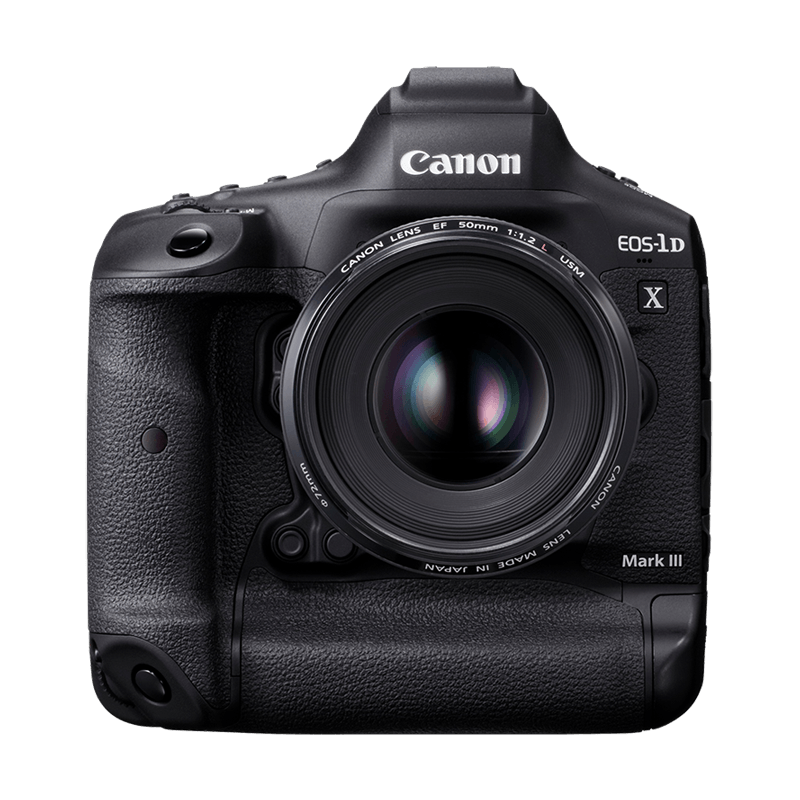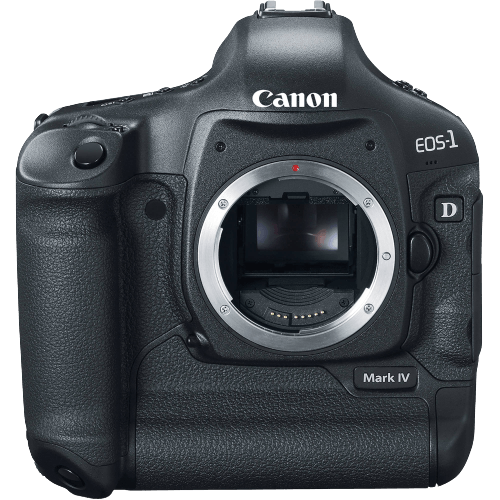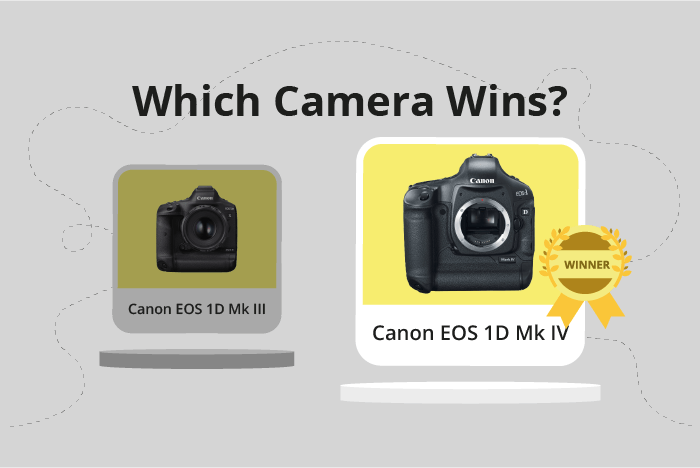Canon EOS 1D Mark III vs EOS 1D Mark IV Comparison
Canon EOS 1D Mark III

Canon EOS 1D Mark IV

The Canon EOS 1D Mark IV takes the lead with a score of 54/100, slightly ahead of the Canon EOS 1D Mark III, which scores 52/100. Both cameras are DSLR models, announced in 2007 and 2009 respectively. They share identical dimensions (156 x 157 x 80mm) and similar launch prices, with the Mark IV being more expensive at $5840 compared to the Mark III’s $4050.
The Mark IV has an advantage in weight, weighing 2.71lbs (1230g), making it lighter than the Mark III at 2.94lbs (1335g). Despite the higher score and lighter weight, the Mark III still holds its own with a lower launch price, making it more accessible to photographers on a budget.
Taking into account the similar specifications, the Mark IV’s slightly higher score and lighter weight make it a better choice for those who prioritize portability. However, the Mark III remains a viable option for those seeking a more budget-friendly alternative.
Canon EOS 1D Mark III vs EOS 1D Mark IV Overview and Optics
The Canon EOS 1D Mark IV triumphs over the Canon EOS 1D Mark III in optics with a score of 54/100, a four-point lead over the latter’s score of 50/100. Both cameras share common specifications, such as a 10 fps shooting speed, CMOS sensor type, APS-H sensor size, Canon EF lens mount, and lack of image stabilization.
The 1D Mark IV outperforms its predecessor primarily due to its higher megapixel count of 16.1, compared to the Mark III’s 10.1 megapixels. This increase in resolution allows the Mark IV to capture more detail in images, making it preferable for photographers who require high-resolution outputs. Additionally, the Mark IV boasts a more advanced Digic 4 processor, which contributes to better image processing and overall performance. Its DXOMARK sensor score of 74 further emphasizes its superior image quality compared to the Mark III’s score of 71.
On the other hand, the 1D Mark III does not have any significant advantages over the Mark IV in terms of optics. The shared specifications between the two cameras, such as shooting speed and sensor size, do not provide the Mark III with any edge in this comparison.
Given the four-point difference in optics scores and the Mark IV’s higher megapixel count, advanced processor, and better DXOMARK sensor score, it is evident that the Canon EOS 1D Mark IV offers superior optical performance compared to the Canon EOS 1D Mark III. As a result, photographers seeking better image quality and processing capabilities should opt for the Mark IV over the Mark III.
Canon EOS 1D Mark III vs EOS 1D Mark IV Video Performance
When examining the video capabilities of the Canon EOS 1D Mark III and Canon EOS 1D Mark IV, it becomes clear that the Mark III does not possess video functionality. This means that any comparison in this area must focus solely on the video features of the Mark IV.
The Canon EOS 1D Mark IV has a video score of 43 out of 100. The camera offers Full HD video recording with a maximum resolution of 1920 x 1080. It can record videos at a maximum frame rate of 30fps. However, it does not have built-in time-lapse functionality.
Taking into account the video features of the Canon EOS 1D Mark IV, it is evident that this camera provides video recording capabilities, while the Canon EOS 1D Mark III does not. The Mark IV’s features, such as Full HD resolution and 30fps frame rate, allow users to capture high-quality video footage. However, the absence of built-in time-lapse functionality may be a limitation for some users.
Canon EOS 1D Mark III vs EOS 1D Mark IV Features and Benefits
The Canon EOS 1D Mark IV emerges as the winner with a feature score of 54/100, while the Canon EOS 1D Mark III scores 49/100. Both cameras share some common features, such as a 3-inch screen size, lack of touchscreen, no flip screen, and absence of GPS. However, the Mark IV outperforms the Mark III in certain aspects, while the Mark III has its own advantages as well.
The Canon EOS 1D Mark IV has a higher screen resolution of 920,000 dots, compared to the Mark III’s 230,000 dots. This difference results in a sharper and clearer display on the Mark IV, providing a better experience when reviewing images or navigating menus. Despite not having a touchscreen or flip screen, the improved resolution makes the Mark IV more user-friendly. However, the Mark IV lacks WIFI and Bluetooth capabilities, which are present in the Mark III.
On the other hand, the Canon EOS 1D Mark III has WIFI capabilities, making it easier to transfer files and control the camera remotely. This feature can be beneficial for photographers who frequently need to share images or operate their camera from a distance. However, the Mark III does not have Bluetooth, and its lower screen resolution may hinder its usability compared to the Mark IV.
Taking these factors into consideration, the Canon EOS 1D Mark IV has a slight edge over the Mark III in terms of features, mainly due to its higher screen resolution. However, the Mark III’s WIFI capabilities should not be overlooked, as it can be a valuable feature for some photographers. Ultimately, the choice between these two cameras depends on individual preferences and specific use cases.
Canon EOS 1D Mark III vs EOS 1D Mark IV Storage and Battery
The Canon EOS 1D Mark III emerges as the winner in the storage and battery category with a score of 84/100, significantly outperforming the Canon EOS 1D Mark IV, which scores 48/100. Both cameras share some common specifications, such as accepting SD/SDHC and Compact Flash (Type I or II) memory cards, and lacking USB charging capabilities.
The 1D Mark III’s superiority lies in its two memory card slots, compared to the 1D Mark IV’s single slot, and its impressive battery life, which allows for 2200 shots per charge using the LP-E5 battery. In contrast, the 1D Mark IV offers 1500 shots per charge with the LP-E4 battery.
However, the 1D Mark IV has a slight advantage in storage options, as it also supports UDMA memory cards. Despite this, the 1D Mark III’s longer battery life and additional memory card slot make it the clear winner in this comparison. The Canon EOS 1D Mark III proves to be the better choice for those prioritizing storage and battery performance.
Canon EOS 1D Mark III vs EOS 1D Mark IV – Our Verdict
Are you still undecided about which camera is right for you? Have a look at these popular comparisons that feature the Canon EOS 1D Mark III or the Canon EOS 1D Mark IV:

